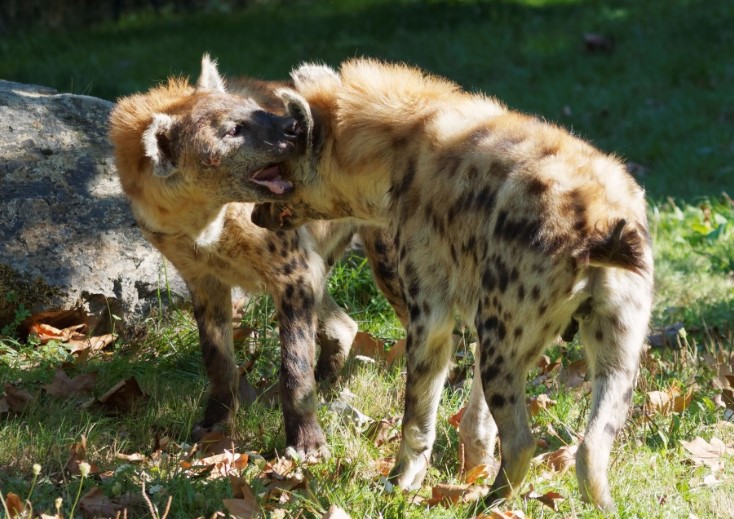
Exploring the Intriguing World of Play in Carnivorous Creatures
When it comes to the animal kingdom, few creatures capture our fascination quite like wolves and hyenas. These carnivorous predators, with their sharp teeth, keen senses, and complex social structures, have long been subjects of study and admiration. But today, we delve into a different aspect of their lives, one that might not immediately come to mind when we think of these formidable animals: play. In this article, we will embark on a journey to understand the play behavior of wolves and hyenas, shedding light on the types of games and interactions observed in the wild and the profound role that play serves in their social dynamics and cognitive development.
Wolves: The Playful Canines
The Role of Play in Wolf Society
Wolves, the iconic symbols of the wild, are known for their intricate social hierarchies and strong pack bonds. It might surprise you to learn that play plays a crucial role in reinforcing these social ties. Playful interactions among wolf pups and even adult pack members serve as a form of bonding, communication, and learning.
From chasing each other in a game of tag to mock-fighting and play-wrestling, wolves engage in a variety of playful activities. These interactions help wolves establish dominance hierarchies within the pack and develop essential hunting skills. Through play, they learn how to coordinate their movements, refine their hunting techniques, and communicate effectively with pack members.
Wolf vs. Hyena: Who Would Win?
Now, let’s address the age-old question: “Wolf vs Hyena Who would win?” This hypothetical battle pits two remarkable carnivores against each other. However, it’s important to note that nature doesn’t always adhere to such simplistic comparisons. Wolves and hyenas have different hunting strategies, social structures, and adaptations that make direct confrontations rare and difficult to predict. Both species are incredibly skilled in their respective environments, and the outcome of any encounter would depend on various factors, including numbers, individual strengths, and circumstances.
Hyenas: The Misunderstood Scavengers
Play as a Social Glue
Hyenas, often portrayed as scavengers, possess complex social systems similar to wolves. They live in clans led by a dominant female, and play also plays a significant role in their lives. Young hyena cubs engage in playful activities that resemble those of domestic dogs, such as biting, pouncing, and chasing. These interactions strengthen the bonds between clan members, promote cooperation during hunts, and help establish a clear hierarchy within the group.
The Hyena’s Cunning Adaptations
Hyenas have evolved unique adaptations that make them formidable competitors in their ecosystem. Their powerful jaws can crush bones, allowing them to access nutrient-rich marrow that many other carnivores cannot. While they are not the primary hunters in their environment, their scavenging abilities are unparalleled. This scavenger lifestyle has led to misconceptions about hyenas as mere opportunists. However, their role in the ecosystem is more complex than meets the eye.
The Intersection of Play, Learning, and Survival
Cognitive Development Through Play
Both wolves and hyenas exhibit a remarkable capacity for learning through play. Whether it’s testing their physical limits, honing their hunting skills, or practicing social interactions, play serves as a critical tool for cognitive development. It allows young individuals to acquire the skills and knowledge necessary for survival in their respective habitats.
The Importance of Play in a Changing World
In today’s rapidly changing environment, understanding the role of play in these carnivorous creatures is more crucial than ever. As their natural habitats face increasing threats from human activities, such as habitat destruction and climate change, these animals must adapt to survive. Play can help them develop the flexibility and problem-solving abilities required to navigate these challenges.
Read also: Succulents and Chill: The Perfect Entertainment Companion
Conclusion: Beyond the Stereotypes
The play behavior of wolves and hyenas offers a fascinating glimpse into the lives of these carnivorous creatures. It showcases their intelligence, social intricacies, and adaptability. While the question of “Wolf vs. Hyena: Who would win?” may always capture our imaginations, it’s essential to appreciate that both species have their unique strengths and roles in the natural world.
As we continue to study and protect these remarkable animals, we must move beyond stereotypes and recognize the significance of play in their lives. Play isn’t just a game; it’s a fundamental aspect of their survival, growth, and interconnectedness within their respective ecosystems. So, the next time you observe playful behavior in wolves or hyenas, remember that it’s not just fun and games; it’s a vital part of their journey in the wild.

